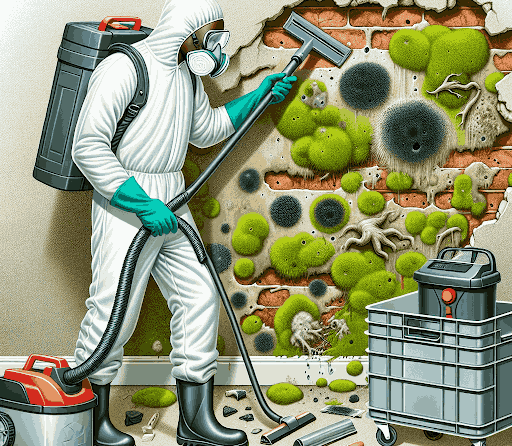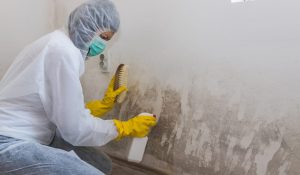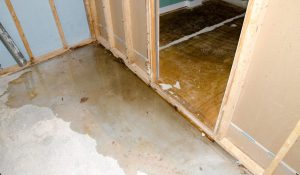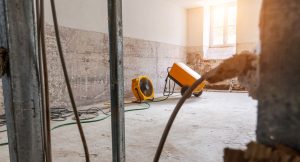
Mould is a common issue in Sydney homes and businesses. It’s not just unsightly, but also poses health risks.
Traditional mould removal methods often involve harsh chemicals. These can harm the environment and may not be safe for people with sensitivities.
Eco-friendly mould removal is a safer, greener alternative. It uses natural ingredients and sustainable practices to eliminate mould.
In this guide, we’ll explore eco-friendly mould removal Sydney. We’ll help you understand what to look for and how to choose the right service.
Understanding Mould and Its Impact in Sydney
Mould is a type of fungus that thrives in damp environments. It’s often found in bathrooms, kitchens, and basements.
In Sydney, the humid climate can contribute to mould growth. This is especially true in older buildings with poor ventilation.
Mould can cause damage to your property. It can stain walls, ruin carpets, and even weaken wooden structures.
But the impact of mould goes beyond physical damage. It can also affect the health of those living or working in the mould-infested area.
Mould produces allergens and irritants. These can cause reactions in people who are sensitive to them.
The Health Risks of Mould Exposure
Exposure to mould can lead to health problems. These range from minor irritations to serious conditions.
Some people may experience allergic reactions. Symptoms can include sneezing, runny nose, red eyes, and skin rash.
In more severe cases, mould can cause asthma attacks. It can also lead to infections in people with weakened immune systems.
Long-term exposure to mould can even cause chronic respiratory illnesses. This is why it’s crucial to address mould issues promptly.
Traditional vs. Eco-Friendly Mould Removal Methods
Traditional mould removal often involves chemical-based products. These can effectively kill mould, but they come with drawbacks.
Chemicals used in mould removal can harm the environment. They can contaminate water sources and contribute to air pollution.
Moreover, these chemicals can pose health risks. They can cause skin and eye irritation, respiratory issues, and even chemical burns in severe cases.
Eco-friendly mould removal, on the other hand, uses natural ingredients. These include vinegar, tea tree oil, and baking soda.
These natural solutions are less harmful to the environment. They also pose fewer health risks compared to chemical-based products.
However, the effectiveness of eco-friendly solutions can vary. It’s important to choose a service that combines these natural methods with professional expertise.
The Benefits of Eco-Friendly Mould Removal
Eco-friendly mould removal offers several benefits. First, it reduces the environmental impact of mould remediation.
Unlike traditional methods, eco-friendly removal doesn’t rely on harmful chemicals. This means less pollution and a smaller carbon footprint.
Second, eco-friendly methods are safer for people and pets. They don’t pose the same health risks as chemical-based solutions.
Finally, eco-friendly mould removal can be just as effective as traditional methods. When done correctly, it can completely eradicate mould and prevent it from returning.
How Eco-Friendly Practices Support Sustainability
Eco-friendly mould removal is part of a larger movement towards sustainability. It’s about more than just getting rid of mould.
It’s about doing so in a way that respects the environment. This includes using natural products and minimizing waste.
Eco-friendly practices also support sustainability by promoting healthier indoor air quality. They reduce the amount of harmful substances released into the air.
In the long run, choosing eco-friendly mould removal can contribute to a healthier planet. It’s a small step that can make a big difference.
Identifying Eco-Friendly Mould Removal Services in Sydney
Finding eco-friendly mould removal services in Sydney is easier than you might think. Many companies now offer green solutions.
Look for companies that advertise eco-friendly or natural mould removal. They should clearly state their commitment to environmental sustainability.
Check their websites for information about their methods. They should use non-toxic, biodegradable products.
Also, consider their reputation. Look for reviews or testimonials from previous customers. This can give you an idea of their effectiveness and customer service.
Questions to Ask Mould Removal Companies
When contacting mould removal companies, it’s important to ask the right questions. This can help you determine their commitment to eco-friendly practices.
Ask about their mould removal methods. Do they use natural products? Do they avoid harsh chemicals?
Inquire about their waste disposal practices. Do they take steps to minimize waste and recycle where possible?
Finally, ask about their certifications. Are they certified by any environmental or industry organizations? This can provide additional assurance of their eco-friendly practices.
- What mould removal methods do you use?
- Do you use natural products?
- How do you dispose of waste?
- Do you have any eco-friendly certifications?
DIY Eco-Friendly Mould Removal Tips
For minor mould issues, you can try eco-friendly DIY solutions. These can be effective and safe for the environment.
One common method is using vinegar. It’s a natural mould killer. Simply spray it on the mould, let it sit for an hour, then wipe clean.
Another option is baking soda. Mix it with water to create a paste. Apply it to the mould, let it dry, then scrub off.
Tea tree oil is also effective. Mix two teaspoons with two cups of water. Spray it on the mould, but don’t rinse.
- Vinegar: Spray, wait, wipe
- Baking soda: Mix, apply, dry, scrub
- Tea tree oil: Mix, spray, leave
When to Call a Professional
While DIY methods can be effective, they’re not always enough. For larger mould issues, it’s best to call a professional.
Professionals have the tools and knowledge to safely and effectively remove mould. They can also help prevent future growth.
The Process of Professional Eco-Friendly Mould Removal
Professional mould removal starts with an assessment. This helps identify the extent of the mould problem. It also helps determine the best removal method.
Next, the area is contained to prevent mould spores from spreading. This is crucial to protect the rest of the property.
The mould is then removed using eco-friendly methods. These methods are effective and safe for the environment.
Finally, the area is cleaned and sanitized. This helps prevent future mould growth. It also ensures the area is safe for use.
Safety Measures and Standards
Safety is a top priority during mould removal. Professionals use protective gear to prevent exposure to mould spores.
They also follow strict standards for mould removal. These standards ensure the process is safe and effective. They also help protect the environment.
Preventing Mould Growth: Tips and Strategies
Preventing mould growth is key to maintaining a healthy environment. It’s also a way to avoid the need for mould removal.
One strategy is to keep your property clean and dry. Mould thrives in damp conditions. So, regular cleaning can help prevent its growth.
Another strategy is to ensure good ventilation. This helps reduce moisture levels. It also helps keep the air fresh and clean.
Here are some tips for preventing mould growth:
- Regularly clean and dry damp areas like bathrooms and kitchens.
- Ensure good ventilation in your property.
- Fix any leaks as soon as possible.
- Use dehumidifiers in damp areas.
The Role of Humidity Control
Humidity control plays a crucial role in preventing mould growth. High humidity levels create a perfect environment for mould.
By controlling humidity, you can significantly reduce the risk of mould growth. This can be achieved through the use of dehumidifiers and air conditioners.
Conclusion: Choosing the Right Eco-Friendly Mould Removal Service
Choosing the right eco-friendly mould removal service is crucial. It ensures the health of your environment and supports sustainability.
Remember to ask the right questions and do your research. This way, you can find a service that aligns with your values and meets your needs.



